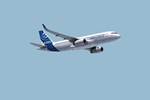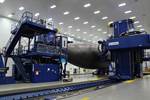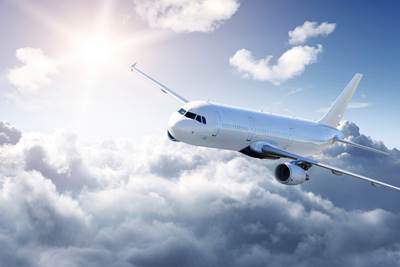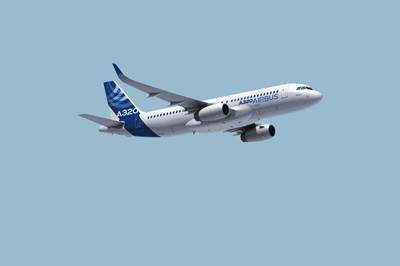United Airlines ramps up orders for Boeing, Airbus aircraft
The purchase of 270 jets from Airbus and Boeing, including the 737 MAX and A321neo, will require about 2.12 million pounds of composite materials.
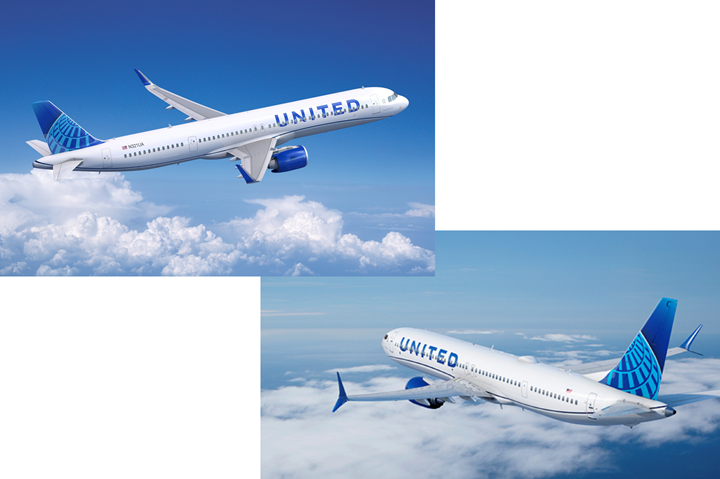
Photo Credit: Airbus (left) and Boeing (right).
As of June 29, United Airlines (Chicago, Ill., U.S.) has placed an order for 70 Airbus (Toulouse, France) A321neo aircraft (complementing the 50 previously ordered) and purchased 200 additional 737 MAX jets from Boeing (Seattle, Wash., U.S.), including 150 for the largest member of the family, the 737-10, and 50 for the single-aisle 737-8. United Airlines says it expects these purchases to grow its presence in the single-aisle market, as well as position United’s fleet for growth and to accelerate demand for air travel.
What does this mean for composites? According to the calculations performed by Gardner Intelligence Chief Economist & Director of Analytics Michael Guckes, more than 850,000 pounds of composite materials would be needed to fulfill the Airbus portion of the order, with 1.27 million pounds needed for the Boeing portion. In all, this number reaches around 2.12 million pounds of composites.
“Our ‘United Next'’ vision will revolutionize the experience of flying United as we accelerate our business to meet a resurgence in air travel,” says United CEO Scott Kirby. “By adding and upgrading this many aircraft so quickly with our new signature interiors, we’ll combine friendly, helpful service with the best experience in the sky, all across our premier global network. At the same time, this move underscores the critical role United plays in fueling the broader U.S. economy — we expect the addition of these new aircraft will have a significant economic impact on the communities we serve in terms of job creation, traveler spending and the shipping of goods and services.”
The purchase from Boeing, specifically, increases United’s order book for the fuel-efficient, single-aisle family to 380 airplanes, including 30 that have been delivered. As the launch customer for the 737-10, United placed its first order in 2017 by converting 100 737-9 orders to the larger 737-10 variant. This current agreement also includes the purchase of Boeing 737 MAX training simulator data packages to support United’s pilot training programs.
Designed and built in Renton, Wash., Boeing says the 737 MAX family delivers efficiency, flexibility and reliability while reducing fuel use and carbon emissions by at least 14% compared to the airplanes it replaces. The 737-8 seats up to 189 passengers and can fly 3,550 nautical miles — about 600 miles farther than its predecessor. The largest model in the family, the 737-10 seats up to 230 passengers in a single-class configuration and can fly up to 3,300 miles. Boeing reports that the fuel-efficient jet can cover 99% of single-aisle routes, including routes served by 757s.
Alternately, the Airbus A321neo is claimed to provide the lowest CO2 emissions per seat in its class. Airbus says the A321neo’s lower carbon footprint will support United along its journey to reduce the airline’s CO2 emissions 100% by 2050. Further, the aircraft delivered to United will be featuring Airbus’ more ergonomic and modern Airspace cabin design (with a composite entrance area delivered by FACC and composite cabin passenger service upgrades by Collins Aerospace).
Airbus says a significant number of the newly-ordered aircraft will be produced at the Airbus U.S. Manufacturing Facility in Mobile, Ala. Globally, as of the end of May 2021, the A320neo Family had achieved 7,400 firm orders from 121 customers, the aerospace company notes.
Related Content
Cryo-compressed hydrogen, the best solution for storage and refueling stations?
Cryomotive’s CRYOGAS solution claims the highest storage density, lowest refueling cost and widest operating range without H2 losses while using one-fifth the carbon fiber required in compressed gas tanks.
Read MoreMaterials & Processes: Fabrication methods
There are numerous methods for fabricating composite components. Selection of a method for a particular part, therefore, will depend on the materials, the part design and end-use or application. Here's a guide to selection.
Read MorePlant tour: Joby Aviation, Marina, Calif., U.S.
As the advanced air mobility market begins to take shape, market leader Joby Aviation works to industrialize composites manufacturing for its first-generation, composites-intensive, all-electric air taxi.
Read MoreMaterials & Processes: Resin matrices for composites
The matrix binds the fiber reinforcement, gives the composite component its shape and determines its surface quality. A composite matrix may be a polymer, ceramic, metal or carbon. Here’s a guide to selection.
Read MoreRead Next
The evolution of the commercial aerospace landscape
Following the grounding of the 737 and the downturn caused by the pandemic, Boeing finds itself a distant second to Airbus. What should it do?
Read MoreAirbus updates single-aisle aircraft production plans
Per its expectations for a 2023-2025 commercial aircraft market recovery, Airbus confirms a rise in A320, A220 and A350 production rates.
Read MoreBoeing said to be evaluating new twin-aisle program
Aviation Week reports that Boeing is in the early stages of developing a twin-aisle in response to the Airbus A321XLR that will use composite wing and fuselage structures.
Read More


